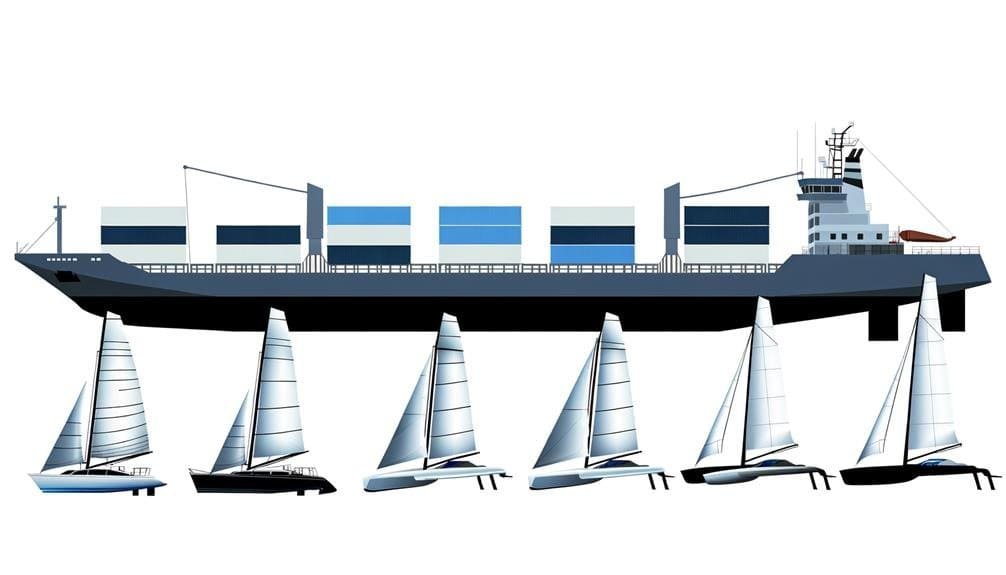Which Type of Vessel Has the Greatest Compliance?
Sailors and seafarers seek the safest ship to sail, but which type of vessel boasts the greatest compliance? In the vast ocean of regulations and standards, it can be challenging to navigate through the depths of data to find the answer. However, fear not, for this discussion will shed light on the factors affecting vessel compliance, the role of regulations, and the intriguing comparisons of compliance levels across different vessel types.
So, prepare to embark on a journey where knowledge and insight await, as we unravel the mystery behind the vessel that upholds the highest standards of compliance.
Key Takeaways
- Compliance data should be analyzed by vessel type to identify patterns and trends specific to each type, providing valuable insights for improving compliance measures.
- Regulations play a crucial role in ensuring compliance in the maritime industry, providing standardized guidelines for vessel operations and safety, and enforcement by regulatory authorities through inspections, audits, and investigations.
- Comparing compliance levels across vessel types helps evaluate the effectiveness of regulatory measures, identify areas needing improvement, and allocate resources effectively based on compliance levels.
- To determine the vessel type with the highest compliance, factors such as safety protocols, crew training and qualifications, robust maintenance and inspection practices, and the presence of a strong compliance culture should be considered, along with examination of enforcement measures and industry best practices.
Factors Affecting Vessel Compliance
There are several key factors that influence vessel compliance.
One of these factors is the prevalence of illegal fishing activities. Vessels engaged in illegal fishing often disregard regulations and operate outside the law, leading to non-compliance.
To address this issue, enforcement measures play a crucial role. Effective enforcement can deter illegal fishing activities and promote compliance among vessel operators. These measures may include increased patrols and surveillance, stricter penalties for offenders, and improved cooperation between international agencies.
Analyzing Compliance Data by Vessel Type
To further analyze vessel compliance, it's essential to examine the data by vessel type, taking into account various factors that may influence compliance levels. By analyzing data trends specific to each vessel type, it becomes possible to identify patterns and determine which types of vessels have the greatest compliance.
This analysis can provide valuable insights into areas that may require improvement and help in devising effective strategies to enhance compliance measures.
When analyzing compliance data by vessel type, it's important to consider factors such as vessel size, age, and purpose. Different types of vessels may have varying levels of complexity in terms of compliance requirements. For example, larger vessels may have more stringent regulations due to their potential impact on the environment and the safety of crew and passengers.
The Role of Regulations in Ensuring Compliance
Regulations play a crucial role in ensuring and maintaining compliance within the maritime industry. Without regulations, there would be no standardized guidelines for vessel operations and safety measures. These regulations are enforced by regulatory authorities, which play a significant role in ensuring compliance. Their role includes conducting inspections, audits, and investigations to ensure that vessels adhere to the established regulations, and taking appropriate enforcement actions against non-compliant vessels. The impact of non-compliance can be severe, ranging from fines and penalties to reputational damage and even accidents. Compliance with regulations is essential to ensure the safety of crew members, passengers, and the marine environment. It also promotes fair competition and establishes a level playing field for all stakeholders in the maritime industry.
| Role of Enforcement | Impact of Non-Compliance |
|---|---|
| Conduct inspections, audits, and investigations | Fines and penalties |
| Enforce regulatory standards and guidelines | Reputational damage |
| Take appropriate enforcement actions | Accidents |
Comparing Compliance Levels Across Vessel Types
Comparing compliance levels across different types of vessels provides valuable insights into the effectiveness of regulatory measures and the overall safety performance within the maritime industry.
Analyzing data on compliance levels allows for a thorough evaluation of the adherence to regulations and identifies areas that need improvement.
By comparing compliance levels, maritime authorities can identify vessel types that may require additional oversight or targeted regulatory measures to enhance safety.
This analysis also helps to identify trends and patterns in compliance, allowing for the development of proactive strategies to address potential non-compliance issues.
Understanding the variations in compliance levels across different vessel types enables regulators to allocate resources effectively and prioritize their efforts to ensure the highest level of safety across the maritime industry.
Identifying the Vessel Type With the Highest Compliance
By analyzing compliance levels across different types of vessels, regulators can identify the vessel type that demonstrates the highest adherence to regulations and sets a benchmark for safety performance in the maritime industry. To determine the vessel type with the highest compliance, investigators must consider various factors and examine enforcement measures and industry best practices. Here are four key aspects to consider:
- Safety protocols: Investigate the vessel type that consistently follows safety protocols and implements measures to mitigate risks effectively.
- Crew training and qualifications: Explore vessels that prioritize crew training and ensure that their crew members possess the necessary qualifications and certifications.
- Maintenance and inspection practices: Look for vessels that have robust maintenance and inspection practices in place, ensuring that they adhere to regulatory requirements and promptly address any issues.
- Compliance culture: Identify vessel types that foster a strong compliance culture, where all stakeholders prioritize safety and follow regulations diligently.
Conclusion
Based on the analysis of compliance data, it can be concluded that the vessel type with the greatest compliance is the one that adheres most strictly to regulations.
This raises the question: does strict regulatory enforcement lead to higher compliance rates?
Further research is needed to explore the relationship between regulations and compliance levels, potentially leading to improvements in overall vessel compliance.







